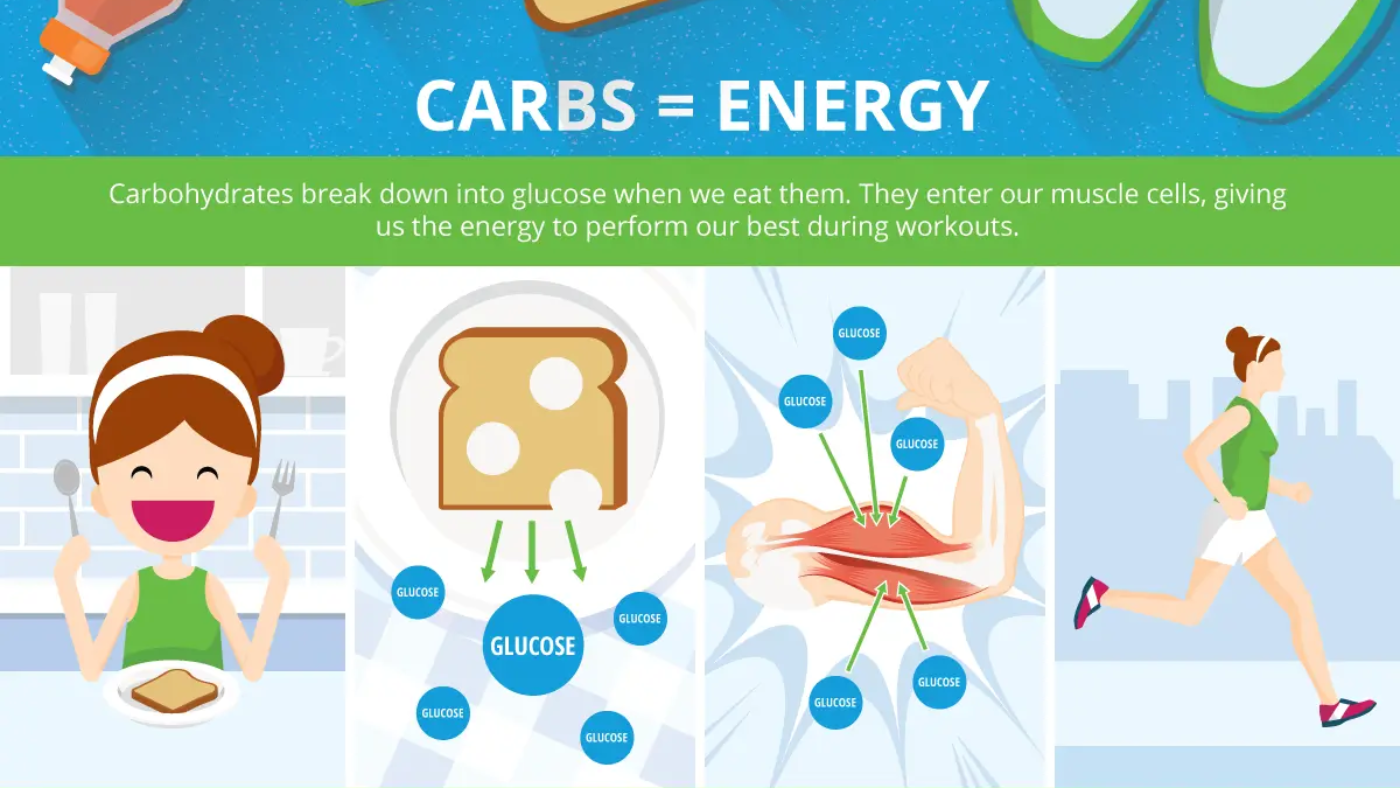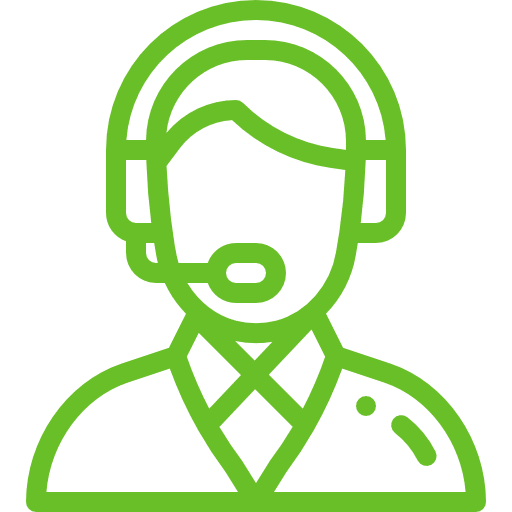When it comes to a nutritious diet, it can seem like there’s a lot to keep track of. You’re probably already paying attention to what and how much you eat. But considering when you eat certain foods in relation to your workout—before, during, and after—can make a big difference, too. With a few simple guidelines, it’s easy to choose food that’s tailored to your exercise routine for the best results.
Before a Workout: Water and Complex Carbohydrates
The bottom line in pre-workout nutrition is to load up on healthy carbohydrates one to four hours before your exercise session. This means choosing whole grains (complex carbohydrates) when you can and selecting foods low in fat that also have low or moderate protein content. If you’ll exercise for longer than an hour, shoot for 30-40 grams of carbs.1
The details of your optimal pre-fitness snack depend on what works best for your routine. Some people who work out early in the morning may not have time to prepare a complicated meal before heading out the door. In that case, you’ll want something you can grab quickly as you leave to start your day—or at least something you can throw together in a few minutes. “Protein bars are ideal for post-workout snacking to replenish tired muscles, but you’re better off munching on an ‘energy’ bar before a long sweat, as they’re typically higher in calories and carbs,” according to registered dietitian Natalie Rizzo.1
Don’t Work Out Without Eating
No matter what you eat, anything is better than working out with an empty stomach. When it’s been a while since your last meal, your metabolism is in fasting mode. Without readily available energy from food, your body ends up breaking down your stored fat in search of sustenance.
Certified nutritionist Liz Wyosnick explained: “Exercising on empty doesn’t equate to getting leaner. With a properly fueled body, you will be able to exercise harder, burn more calories and potentially burn more body fat during and after your exercise.”2 Not only that, but when your body doesn’t have food energy available and turns to fat stores, keto-acid begins to pile up in your blood. This state is called ketosis, and it can cause dizziness, fatigue, and even kidney damage.3
Here are a few snacks and small meals to help you power through your workout:
- Smoothie made with fruit, yogurt, and milk or almond milk
- Cooked freekeh with fruit
- Fruit and nut bar
- Greek yogurt topped with granola
- Fresh beet and peach or nectarine salad
- ½ cup dried oats, cooked, with almond butter
- 1 slice whole-wheat toast with jam
Caffeine May Also Boost Fat Burn
A 2021 study found that taking caffeine or drinking coffee half an hour before exercise can help with burning fat. “The results of our study showed that acute caffeine ingestion 30 minutes before performing an aerobic exercise test increased maximum fat oxidation during exercise regardless of the time of day,” said lead study author Francisco J. Amaro.4
Don’t Forget Your Water
Make sure to drink plenty of water so that you’re properly hydrated before you begin. Drink at least a few cups of fluids before exercising.
What are the early signs of hearing loss?
With age-related hearing loss, your ability to hear higher-pitched sounds is usually the first thing to go, says Dr. Michaelides.
“That part of the inner ear is weakest and more prone to hearing loss over time,” he says.
One telltale sign of hearing loss: You have a harder time understanding speech from women and children.
Other early signs of hearing loss to watch for:
- You struggle to hear people on the other end of the phone.
- You have trouble hearing conversations when there’s a lot of background noise.
- You find yourself turning up the volume on the TV louder than you used to.
- You need to ask people to repeat themselves.
“If you have any of those signs, it’s very reasonable to get a hearing test,” says Dr. Michaelides.
How is hearing loss diagnosed?
Hearing tests are performed by specialists known as audiologists. You can book an appointment with one directly or visit your primary care provider and get a referral.
If you’re on Medicare, you’ll need a referral to get coverage, says Dr. Michaelides.
Here’s what to expect: After you fill out your case history form and review it with your audiologist, you’ll put on a set of earphones and raise your hand whenever you hear a beep. This will help determine your “threshold” of hearing. That’s the quietest sound you can hear at different frequencies—generally from 250 Hz to 8,000 Hz, which is the frequency range for speech sounds, says Tracy Winn, AuD. Winn is an audiologist at Northwestern University in Evanston, Illinois.
“That tells us how loud sound has to be for you to hear it,” Winn says.
You may be able to hear just fine at lower frequencies but struggle with higher ones. All this helps your audiologist figure out your degree of hearing loss—mild, moderate, severe, or profound—so they can find the best solution for you.
You’ll also be asked to put on a “bone oscillator.” This is a metal headband. Each end fits behind either ear, allowing sound to bypass the outer and middle part of the ear.
“If you have significantly better hearing with the bone oscillator, then we know you have something blocking that process,” such as fluid or earwax buildup, Winn says.
Finally, the audiologist may measure your ability to hear speech clearly. They may provide a list of words, including single-syllable words with difficult sounds such as “s,” “f,” and “th,” and be asked to repeat each one.
“If word recognition is impaired, there may be a limit to the benefit you will receive with hearing aids,” Winn says. “But even with impaired speech clarity, most people will notice benefit with hearing aids.”
Your audiologist may also send you to a hearing loss physician, or otologist, to help confirm a diagnosis, says Dr. Michaelides. An otologist will perform a physical examination, looking inside your ear canal to check for damage to the hearing bones or eardrum.
A diagnosis will then be made based on the hearing test results and the physical exam, says Dr. Michaelides.
Keep in mind you may have more than one type of hearing loss—for example, you may have excess earwax along with age-related hearing loss.
How do I treat my hearing loss?
Depending on what you learned from the hearing test and exam, your doctor or audiologist may recommend one of the following options:
Hearing aids. If you have age-related hearing loss, this is likely the first treatment you’ll be advised to try. In a nutshell, hearing aids work by amplifying the sound in your ears. And they’ve come a long way in recent years.
For example, you can program the hearing aids to prioritize certain sounds—such as people’s speech, or music if you’re a music lover. They’re basically little computers that are programmed to suit your unique needs and preferences.” Although there are a lot of different products out there, your audiologist will guide the selection process and present what is appropriate for a person,” says Winn.
“The options that most people need to consider are technologies such as Bluetooth compatibility, rechargeable batteries, tele-coil compatibility, and the style or size of the hearing aids,” says Winn. “There are technology levels to consider based on lifestyle and mainly to do with background noise and how much a person wants the hearing aids to react to noise automatically.”
You’ll get a trial period—usually 30 days—to decide if the hearing aids you choose are right for you. Then you’ll return to your audiologist in two or three weeks or for adjustments and fine-tuning, which may require more follow-up appointments. Once you’re happy with your hearing aids, Winn recommends regular six-month visits with your audiologist to have your hearing aids checked and cleaned. If you’re having any trouble at all with your hearing aid, book a visit with your audiologist for help.
Cochlear implants. If your hearing aids aren’t helping, you may be a candidate for a cochlear implant, says Dr. Michaelides. “That’s a device we implant into the inner ear to restore hearing,” he says.
Most adults who undergo the surgery hear better afterward, often immediately. Hearing may continue to improve for about three months or even years. To determine if you’re eligible for an implant, you’ll need a more extensive hearing test and medical exam, and possibly a CAT scan—a type of x-ray—taken of your inner ear, says Dr. Michaelides.
Surgery. For specific problems with your eardrums or the hearing bones, surgery can help restore hearing, says Dr. Michaelides. For example, if you have a hole in your eardrum—which can be caused by an infection, air pressure changes (from, say, diving), or from foreign objects such as a cotton swab, your doctor can help you decide if this can be surgically repaired.
Earwax removal. Everybody’s ears produce earwax, but some people make more than others. Too much can block the ear canal, making it harder for you to hear. Luckily, this type of hearing loss can be fixed by removing it.
Your doctor may be able to remove your earwax by sucking it out (suction), flushing it out with liquid (irrigation), or by using a small tool with a loop on the end of it. You can even buy drops at your local pharmacy to help loosen and remove earwax. But don’t try to remove the wax with a cotton swab, Dr. Michaelides says. You may push it farther in.
Fluid drainage. Sometimes fluid can build up in the middle of your ear (from, say, an infection), dampening the vibration of the eardrum. And that may cause hearing loss, says Dr. Michaelides. To drain the fluid, your physician may prescribe a medication to release it. Or the doctor could make a small hole in the eardrum, inserting a small tube into it and removing it.
Are there any over-the-counter hearing loss treatments?
If you’re suffering from only minor hearing loss and need help in certain situations, says Winn, you could consider buying a personal sound amplification product (PSAP).
“I think of them as reading glasses for hearing,” she says. “They’re for people who don’t need amplification all the time but might struggle while watching a play or a movie at home—just to get that extra little boost.”
But it’s worth noting that PSAPs aren’t approved by the U.S. Food and Drug Administration as devices to aid a person with hearing loss.
Pretty soon, though, you’ll be able to buy hearing aids meant for adults with mild to moderate hearing loss directly from the store. “Nothing would be on the market until late 2022 or 2023,” says Kelley.
Will Medicare cover my hearing aids?
Let’s start with what Medicare will cover. If your doctor orders you a hearing exam, it will be covered by Medicare. You would, however, pay 20% of the Medicare-approved amount.
While some Medicare Advantage plans cover hearing aids, Original Medicare does not.
That may change soon: New legislation in Congress has been proposed that would cover the cost of hearing aids for those with moderately severe, severe, or profound hearing loss starting in 2023.
That’s a big deal, considering the cost of hearing aids.
But that doesn’t mean you should wait for the new law to pass. Talk to a licensed Antares insurance agent at (818) 8057113 about finding a Medicare Advantage plan that covers hearing aids.
Remember that cochlear implant? It may be covered by Medicare too.
Talk to your doctor if you have questions about whether that or another treatment is covered.
How can I prevent hearing loss?
While age-related hearing loss isn’t reversible, you can help keep it from getting worse. One of the best ways to do that: Use earplugs when you’re around loud noises, including while using power tools or your lawnmower, or while at a rock concert or a wedding reception.
“I always carry earplugs,” says Kelley, who uses the disposable foam kind that you can buy at any drugstore. They don’t cost a lot, and they can help reduce decibel levels.
Another tip for podcast and music lovers: Overusing earbuds—the type of hearing device that fits directly in your ear—can potentially damage your hearing.
Limit earbud use to no more than two hours a day, Winn recommends. ”But this, of course, depends on how loud someone is listening to the sound presented through the earbuds. The louder the output, the shorter the time you can listen before being at risk for noise-induced hearing loss.”
How can I fit hearing aids into my active lifestyle?
Hearing aids are great, but don’t assume they’ll solve all your problems.
“Managing life with hearing loss is a whole rehabilitative process,” Winn says. “Hearing aids are one part of that. But there are a lot of components to learning how to function better in the world when you have hearing loss.”
Try these tips.
- Use visual aids. “We all lip-read whether we know it or not, but people with hearing loss really depend on that tool,” Kelley says. Try to face people when they’re speaking and talk in rooms with good lighting, suggests Winn. Also ask people not to cover their mouths when they speak—such as with a menu at a restaurant.
- Find quiet places. For example, if you’re going out to dinner, ask to be seated in a corner without a lot of people around or with your back to a wall to help block noises coming from behind you. Spaces with carpeting, which may help absorb sound, could potentially be better than ones with wood floors.
- Try a remote microphone. This tool works together with your hearing aids and can help you hear people in situations with a lot of background noise, says Winn. Someone talks into the microphone, and their words stream directly to your hearing aids. Many hearing aid manufacturers also use smartphone apps that can do this, so you can use your phone instead of the microphone. Table microphones are also available for group meetings. And you can even get a device for your TV that lets you adjust the volume so that you can listen to it louder (or quieter) than the person next to you.
- Know your options. Many movie theaters, concert halls, churches, and other large venues have assistive listening systems. These work directly with your hearing aids or sometimes through earphones the place provides, says Winn.
Bottom line: If you’re having trouble hearing, schedule an appointment with an audiologist or your doctor. You could begin taking steps to hear better right away—and as you’ve just learned, that could be nothing short of life-changing.
Worried about your hearing but don’t have health insurance coverage? Contact a licensed Antares agent today at (818) 8057113, or review plans online.



